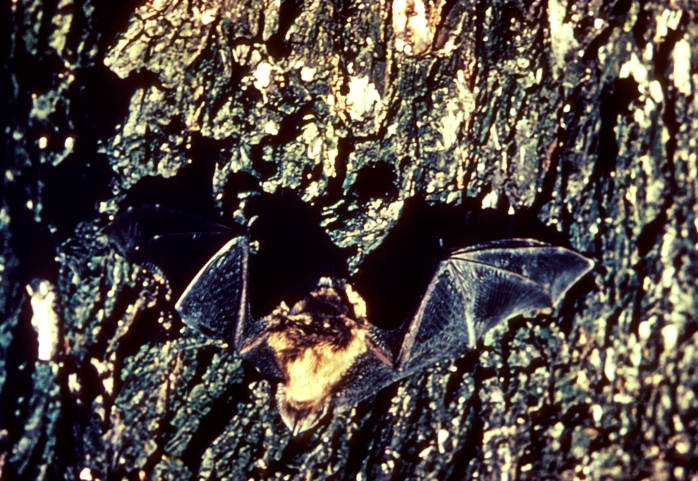
Bats are the most common source of human rabies infection in the U.S. Photo credit: Fritzwater, W.D./U.S. Fish and Wildlife Service
By JULIET WANG
LANSING–Rabies remains a problem in Michigan, with 70 animals testing positive in 2010.
Most cases of animal rabies are reported in the Lower Peninsula, especially in the southeast.
Counties where humans and pets were exposed to the disease but showed no risk and received adequate treatment last year include Oakland, Kent, Genesee, Shiawassee and Clinton, according to the Department of Agriculture.
Tom Cooley, a Department of Natural Resources and Environment (DNRE) biologist, said, “The lower half of Michigan has the majority of people, so the majority of human exposure is associated with the human population.”
There were 68 positive animal tests last year, 79 in 2007 and 47 in 2001.
When officers find a suspicious animal they submit it for rabies testing, said Cooley.
In 2009, a Northern Michigan man died from bat strain of rabies infection, and no human died from rabies this year, according to the Centers for Disease Control and Prevention. Before 2009, there had been no human deaths from the disease since 1983.
Bats are the most common source of human rabies infection in the United States.
“There is not really a way to control rabies in bats. Bats are the No. 1 rabies species in the state,” said Cooley.
Skunks come in second but they account for only a small percentage of cases. Even fewer instances involve household pets, he said.
Linda Benson, director of the Animal Control Division in Monroe County, takes the disease seriously and cited a situation where two bats found in the county tested positive a couple years ago. “Both were found in homes not near each other and neither one was dead,” she said.
Cooley, the state wildlife biologist, said, “The busy time is in August when young bats leave their nests and they might end up on somebody’s roof because of their inexperience or wind up in a house.
“Some people have called in the past saying they found bats dead around their yard or on the side of a building, but those bats have never tested positive,” he said.
Cooley said DNRE isn’t concerned about a raccoon strain found on the U.S. Eastern seaboard. “The only concern is if someone brings a raccoon from out of the state, but that is illegal.”
Benson said she’s not seen any rabid raccoons.
“Some fall over dead but that’s not a symptom of rabies,” she said.
Symptoms of rabies in animals include foaming at the mouth and erratic behavior, either exhibiting signs of paralysis or showing extreme excitement and aggression.
Cooley said DNRE tests for any strain of rabies. “What exposed that animal? We do get skunks, cows, horses that wind up getting bitten in the barn or an unvaccinated pet.”
And Benson said, “We treat every bite, scratch or skin abrasion from an animal as a potential positive for rabies.
“But the two bats really startled us. It was really bizarre because we never had any before that,” she said.
© 2010, Capital News Service, Michigan State University School of Journalism. Not to be reproduced without permission.
Have they checked WASHINGTON D.C.? Some of symptoms are showing up there!